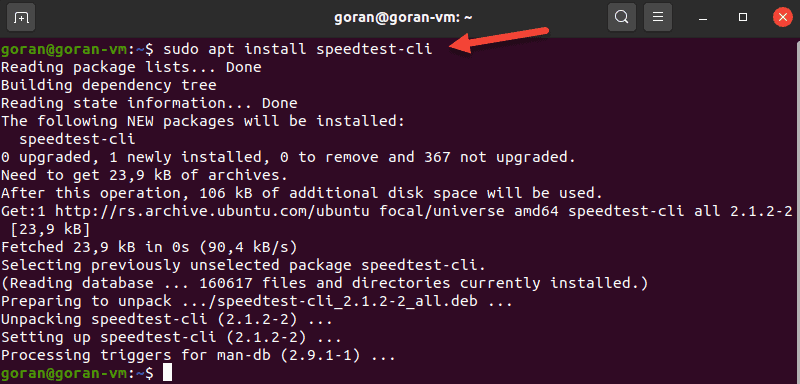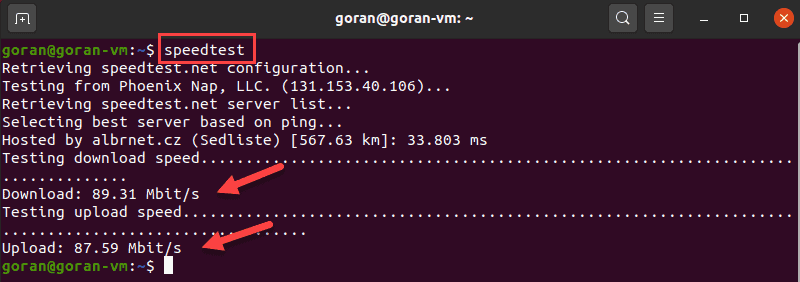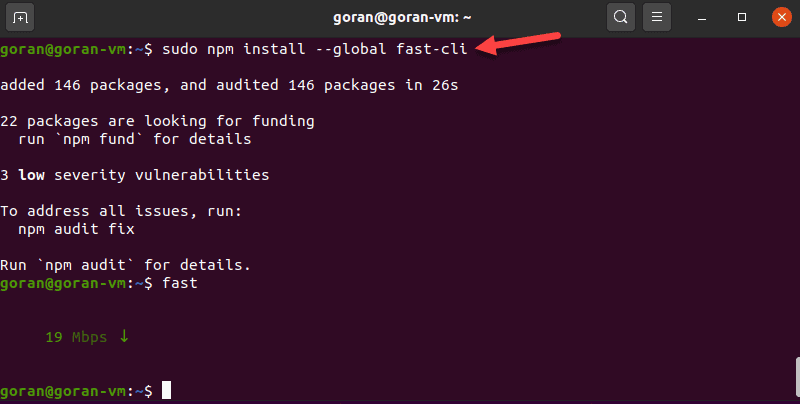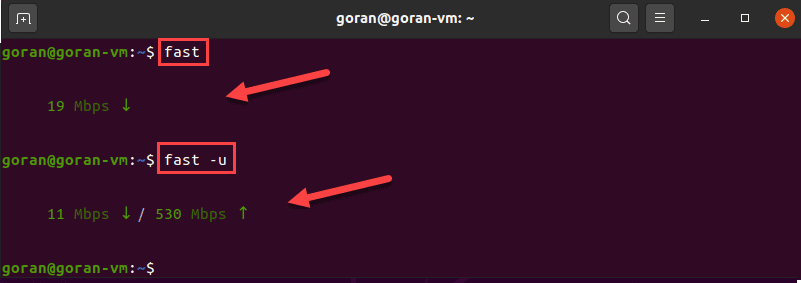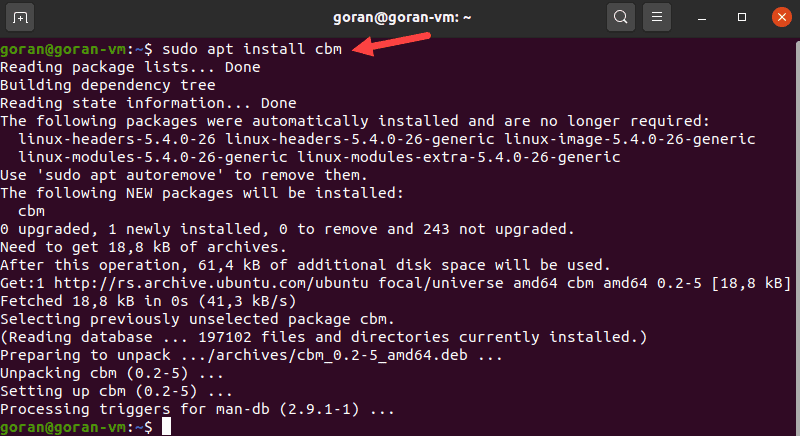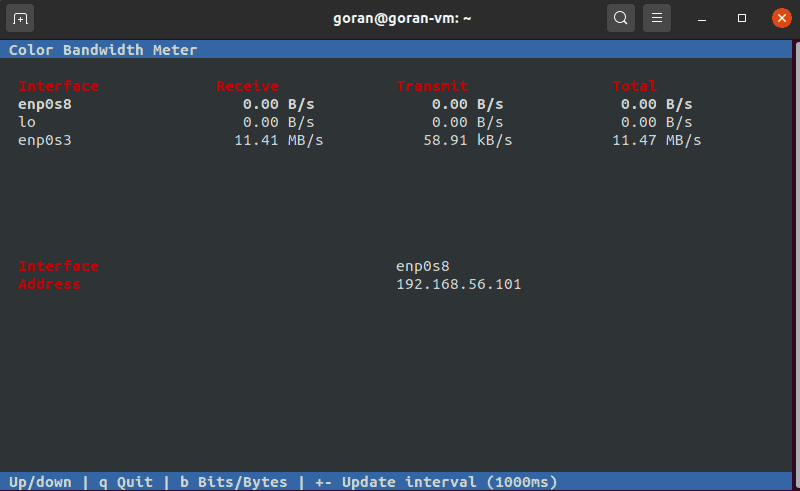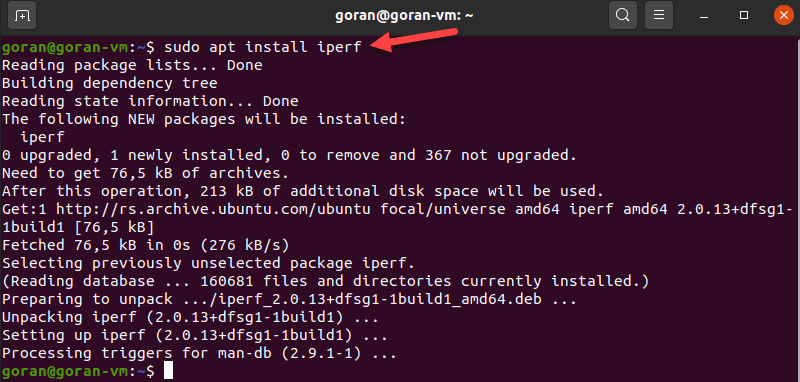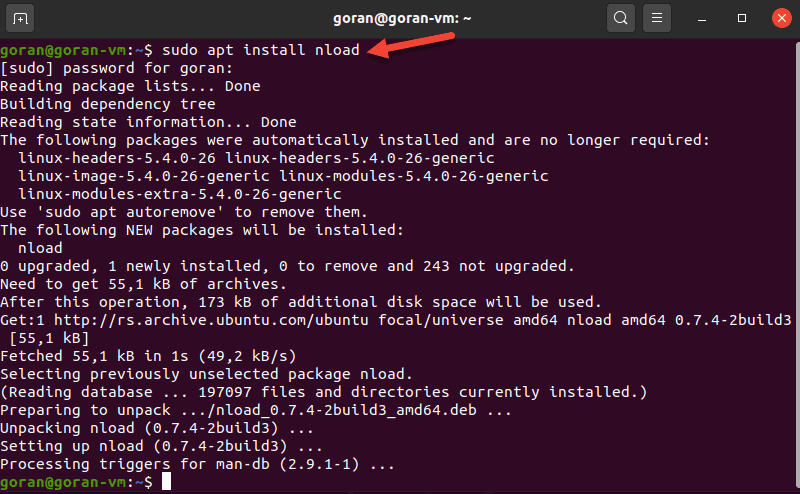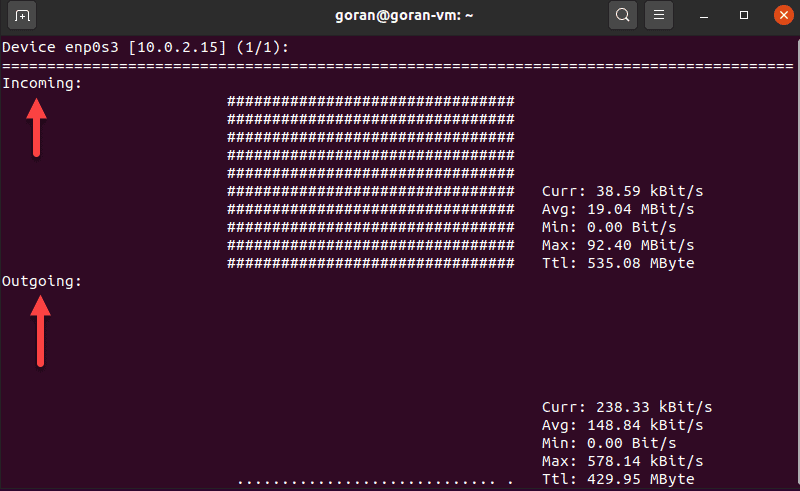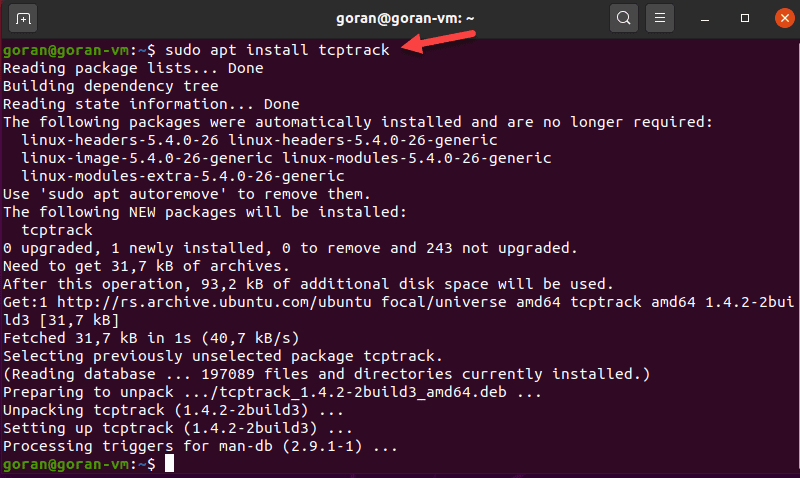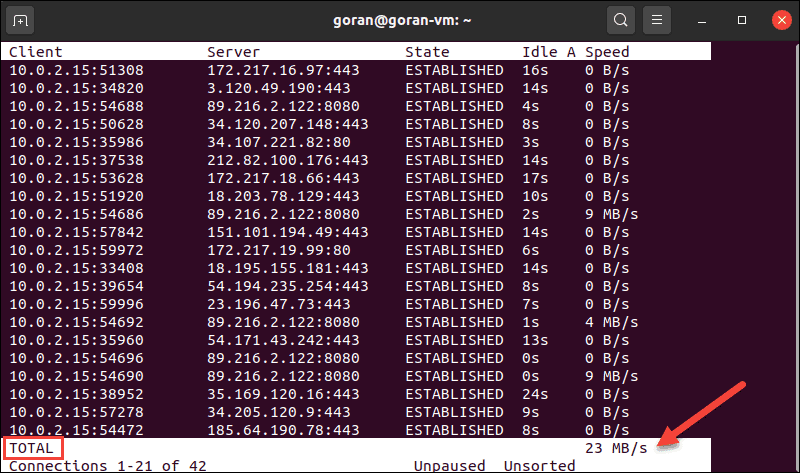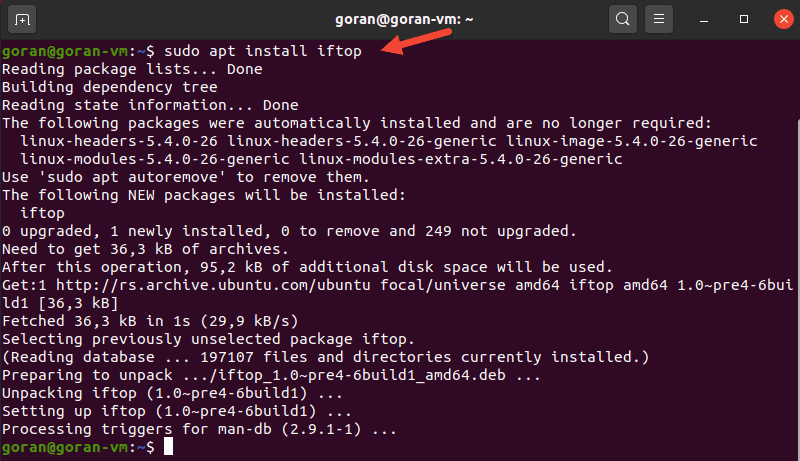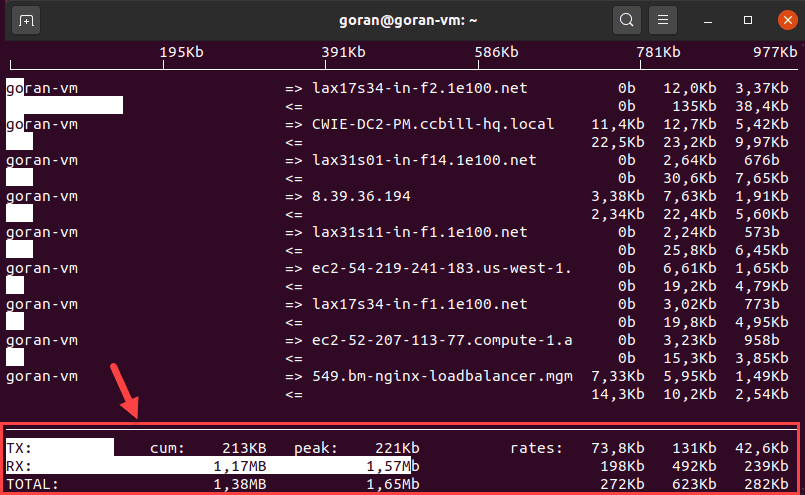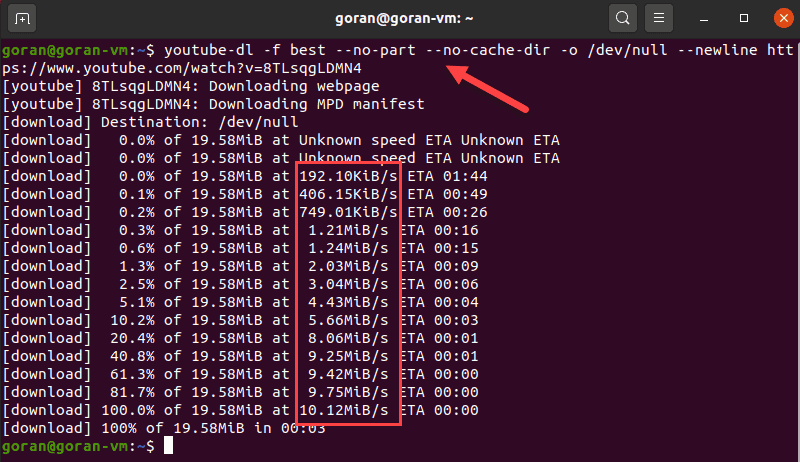- Как посмотреть скорость и дуплекс сетевой карты в Linux? кратко
- ПРОСМОТР СТАТИСТИКИ ИНТЕРФЕЙСА
- Вау!! 😲 Ты еще не читал? Это зря!
- How to Test Network Speed in Linux via CLI
- Test Network Speed on Linux Via Command Line
- Using speedtest-cli to Test Internet Speed
- Using fast-cli to Test Internet Speed
- Using CMB to Show Network Speed
- Using iperf to Measure Network Speed Between Two Devices
- Using nload to View Incoming and Outgoing Network Traffic
- Using tcptrack to Test Network Activity
- Using iftop to Test Speed on a Network Interface
- Using wget to Test Download Speed
- Using youtube-dl to Test Internet Speed
- Как я могу проверить скорость моей сетевой карты Linux
- Метод №1 с использованием ethtool
- Для Ubuntu/Debian/Mint
- Для CentOS/Redhat/Fedora
- Метод # 2 с использованием dmesg
- Метод №3 Использование mii-tool
- Для Ubuntu/Debian/Mint
- Для CentOS/Redhat/Fedora
Как посмотреть скорость и дуплекс сетевой карты в Linux? кратко
Вот работаем мы и работаем в Linux, через ifconfig настраиваем IP-адреса да маски и даже посмотреть — есть ли линк через него можем. Но вот незадача — в отличие от FreeBSD, в Linux команда ifconfig не показывает одного из важнейших параметров: режим работы сетевой карты — т.е. ее скорость и дуплекс.
Как же посмотреть скорость сетевого интерфейса и дуплекс?
Вывод покажет нам имя сетевой карты устройства. Чтобы увидеть текущие значения скорости сетевого линка в Linux, а также — в полнодуплексном ли режиме оно работает или нет — нам понадобится утилита ethtool. Из коробки ее может не быть (вот такие приколы), потому следует поставить.
После этого запускаем ее с указанием — текущая скорость какой сетевой карты нас интересует и глядим в вывод:
$ sudo ethtool eth0
Settings for eth0:
Supported ports: [ TP MII ]
Supported link modes: 10baseT/Half 10baseT/Full
100baseT/Half 100baseT/Full
1000baseT/Half 1000baseT/Full
Supports auto-negotiation: Yes
Advertised link modes: 10baseT/Half 10baseT/Full
100baseT/Half 100baseT/Full
1000baseT/Half 1000baseT/Full
Advertised pause frame use: No
Advertised auto-negotiation: Yes
Link partner advertised link modes: 10baseT/Half 10baseT/Full
100baseT/Half 100baseT/Full
1000baseT/Full
Link partner advertised pause frame use: No
Link partner advertised auto-negotiation: Yes
Speed: 1000Mb/s
Duplex: Full
Port: MII
PHYAD: 0
Transceiver: internal
Auto-negotiation: on
Supports Wake-on: pumbg
Wake-on: g
Current message level: 0x00000033 (51)
Link detected: yes
Это и есть — искомые текущая скорость сетевого подключения и его дуплекс.
ПРОСМОТР СТАТИСТИКИ ИНТЕРФЕЙСА
sudo ethtool -S имя_устройства
Вау!! 😲 Ты еще не читал? Это зря!
How to Test Network Speed in Linux via CLI
With the increase in people staying at home and spending more time on the Internet, ISPs have seen traffic loads higher than ever. If you noticed your network speed was slower at times, this global overload is the reason.
There are many online tools to test internet speed. However, Linux users can do this from the command prompt window. Some of the utilities for testing both local and internet speed we will cover are:
- Speedtest
- Fast
- Color Bandwidth Meter (CBM)
- iPerf
- nload
- Tcptrack
- Iftop
- Wget
- youtube-dl
Follow the instructions in this article to learn how to test network connection speed on Linux using the terminal. The steps work in both normal and headless mode.
- A machine running Linux
- sudo / root permissions
- Access to a terminal / command-prompt window
Test Network Speed on Linux Via Command Line
The tools in this guide help you check the Internet and LAN speed on a Linux machine. The article uses Ubuntu 20.04 for instructions, but the utilities work for any Linux distribution.
Note: Use the appropriate package manager for your Linux distribution, for example, yum for RHEL / CentOS, to install the apps.
Using speedtest-cli to Test Internet Speed
One of the most famous online internet connection test apps is speedtest.net. To install Speedtest on Linux via the terminal, use a package manager for your distro.
sudo apt install speedtest-cliOptionally, use pip to install speedtest-cli in Python:
sudo pip install speedtest-cliThe standard speedtest-cli output shows all steps, including selecting a server. To display a shorter output, enter:
The test is simple to use and provides multiple options. To view all of them, pass the -h flag to display the speedtest-cli help file.
Using fast-cli to Test Internet Speed
Fast is a lightweight CLI utility based on the web speed test fast.com. The test uses Netflix servers to provide results.
Fast-cli is simple to use, but you need the node package manager (NPM) on your machine. The package comes with Nodejs.
For example, to install Node.js version 15, enter these commands:
curl -sL https://deb.nodesource.com/setup_15.x | sudo -E bash -Then, run the install command:
sudo apt install -y nodejsIf needed, run the npm init command and then install Fast:
npm install --global fast-cliTo test the download speed, enter:
To show both the download and upload speed, add the -u option:
This internet speed test aims to provide only the information about your connection speed, without any bells and whistles.
Note: Since NPM is a requirement, it can be a hassle to install fast-cli. If you need more help with NPM installation, see our guides How To Install Node.Js And NPM On CentOS or How To Install Node.Js & NPM On Ubuntu.
Using CMB to Show Network Speed
The Color Bandwidth Meter (CMB) is a Linux tool that displays activity on all network interfaces. After the installation, run the tool to see network speeds in color-coded columns.
To install CBM, run this command:
When the process finishes, run the tool:
The output displays the transmit, receive, and total speed. Use the arrows to switch between the interfaces.
Using iperf to Measure Network Speed Between Two Devices
The iPerf tool provides many options for testing connection speed between a server and a client. Hence, to perform a test, you need to install the utility on both machines:
Make sure the client can reach the server. For quick confirmation, run a ping test.
If port 5001 is open, the connection works. So, on the server machine, enter:
The device starts listening for a connection request.
On the other machine, enter:
The output shows the transfer and bandwidth information:
Using nload to View Incoming and Outgoing Network Traffic
Nload is a tool that monitors incoming and outgoing activity on a network interface you specify. The application splits the traffic into two sections for easier data analysis.
To install the tool, enter:
To run the application, specify the network interface:
If there is activity on the selected interface, nload displays network speed details.
Using tcptrack to Test Network Activity
TCPtrack shows the connection status for a network interface. When your machine’s network is active, run this tool to view and monitor bandwidth speed and usage.
To install tcptrack on Linux Ubuntu, enter:
sudo apt install tcptrackTo view network activity with TCPtrack, specify the network interface. To find the device name, use the ifconfig tool.
In our case, it is enp0s3
The terminal displays the network activity on the selected interface. The total network speed is at the bottom of the terminal:
Note: Make sure you run tcptrack with sudo . Otherwise, this error pops up: pcap_open_live: enp0s3: You don’t have permission to capture on that device (socket: Operation not permitted)
TCPtrack is customizable and offers options to narrow down the test to specific ports, for example.
To do so, pass the port option and the port number:
sudo tcptrack -i enp0s3 port 443If there is no activity on the port, the output is blank.
Using iftop to Test Speed on a Network Interface
Iftop lets you view network speed for a defined interface. The tool shows a similar output to what tcptrack provides.
To install iftop, run this command:
To launch the utility, use the -i flag and specify your network interface.
In our case:
The output shows the activity for the device. The bottom of the screen provides a traffic summary.
If you do not specify a network interface, iftop selects the first available. Make sure you run the command with sudo to avoid any errors.
Using wget to Test Download Speed
Wget is a CLI tool for downloading content from web servers. Since the tool does not upload files, you can only test the download speed.
If you do not have wget on your Ubuntu machine, enter this command to install it:
Now, choose a reliable server to download a file and test your internet speed. For example, use phoenixNAP’s 1GB test file from the list.
This example uses a server located in Phoenix:
wget -O /dev/null -q --show-progress http://174.138.175.114/PHX-1GB.testUsing youtube-dl to Test Internet Speed
An unconventional way to test your download speed is to use the youtube-dl CLI utility. The tool allows you to download YouTube videos and view the download speed.
To install youtube-dl, enter:
sudo apt install youtube-dlThe application takes around 268MB of space. While the installation is in progress, choose a video you want to download and save the URL.
When the process finishes, use this command but replace the URL with the one you selected:
youtube-dl -f best --no-part --no-cache-dir -o /dev/null --newline https://www.youtube.com/watch?v=8TLsqgLDMN4The terminal shows the download progress, file size, download speed, and ETA.
The command above does not save the file to any filesystem, hence the /dev/null part.
This example used a short phoenixNAP BMC demo video of around 19MB. Choose a longer video for more precise results.
The article showed you nine ways to test network speed in Linux via CLI. Choose the tool depending on whether you want to test local network speed, internet speed, etc.
The tools work for all Linux distributions, so make sure you use the right package manager.
Как я могу проверить скорость моей сетевой карты Linux
С етевая карта или сетевая интерфейсная карта обеспечивает интерфейс между вашей системой и сетью, помимо проводной или беспроводной сети. Каждая сетевая карта имеет рейтинг скорости, например 100 Мбит/с или 1 Гбит/с. Информация о скорости сетевой карты может быть полезна в разных ситуациях. Это может помочь вам диагностировать проблемы с производительностью. Знание предела скорости сетевой карты также полезно, если вы обновляете свои интернет-службы до более высокой пропускной способности, так как это поможет вам проверить, можете ли вы в полной мере использовать доступную пропускную способность.
В этой статье мы расскажем, как проверить скорость сетевой карты в ОС Linux.
Метод №1 с использованием ethtool
Ethtool — удобный инструмент, который позволяет просматривать драйверы и параметры конфигурации оборудования и управлять ими. По умолчанию этот инструмент не установлен в системе Linux. Чтобы установить ethtool в ваши дистрибутивы Linux, используйте следующие команды:
Для Ubuntu/Debian/Mint
Вы можете установить его с помощью этой команды в терминале:
Для CentOS/Redhat/Fedora
Введите пароль sudo, после чего начнется установка. После завершения установки вы готовы к использованию инструмента.
Чтобы узнать скорость вашей сетевой карты, вам сначала нужно знать свое имя сетевой карты. Вы можете использовать эту команду, чтобы найти имя сетевой карты:
Теперь, чтобы узнать скорость сетевого адаптера, введите в Терминале следующую команду:
В нашем случае имя сетевой карты ens33, поэтому команда будет выглядеть так:
Вывод вышеуказанной команды дает информацию о конфигурации сети, включая скорость сетевого адаптера.
Если вас не интересует подробная информация о конфигурации сети и вы просто хотите отобразить скорость NIC, используйте команду ниже:
$ sudo ethtool ens33 | grep -i speed
Если будет предложено ввести пароль, введите пароль sudo.
Эта команда отображает только скорость сетевой карты, которая в нашем случае составляет 1000 Мбит/с.
Метод # 2 с использованием dmesg
Команда dmesg используется для отображения сообщений, относящихся к ядру, в системе Linux. Мы также можем использовать эту команду для определения скорости сетевой карты.
Замените именем вашей сетевой карты.
Вот результат выполнения указанной выше команды в нашей системе, который показывает, что скорость сетевого адаптера составляет 1000 Мбит/с.
Метод №3 Использование mii-tool
Mii-tool используется для проверки или изменения статуса модуля Media Independent Interface (MII) сетевого адаптера. Чтобы установить mii-tools в ваших дистрибутивах Linux, используйте следующие команды:
Для Ubuntu/Debian/Mint
$ sudo apt install net-tools
Для CentOS/Redhat/Fedora
$ sudo dnf install net-tools
Чтобы узнать скорость вашей сетевой карты, используйте инструмент mii следующим образом:
Замените именем вашей сетевой карты. Ниже приведен вывод команды mii-tool в нашей системе, который показывает, что скорость сетевого адаптера составляет 1000 Мбит/с.
В этом посте показано, как проверить скорость сетевой карты в ОС Linux с помощью различных инструментов, включая ethtool, dmesg и mii-tool. Как только вы определите скорость сетевой карты, вам будет проще решить, менять ли карту в случае обновления сети.
Если вы нашли ошибку, пожалуйста, выделите фрагмент текста и нажмите Ctrl+Enter.


